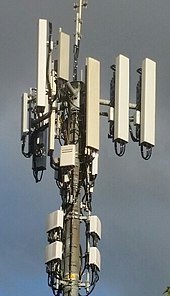
Beamforming

Beamforming or spatial filtering is a signal processing technique used in sensor arrays for directional signal transmission or reception. This is achieved by combining elements in an antenna array in such a way that signals at particular angles experience constructive interference while others experience destructive interference. Beamforming can be used at both the transmitting and receiving ends in order to achieve spatial selectivity. The improvement compared with omnidirectional reception/transmission is known as the directivity of the array. Beamforming or spatial filtering is a signal processing technique used in sensor arrays for directional signal transmission or reception. This is achieved by combining elements in an antenna array in such a way that signals at particular angles experience constructive interference while others experience destructive interference. Beamforming can be used at both the transmitting and receiving ends in order to achieve spatial selectivity. The improvement compared with omnidirectional reception/transmission is known as the directivity of the array. Beamforming can be used for radio or sound waves. It has found numerous applications in radar, sonar, seismology, wireless communications, radio astronomy, acoustics and biomedicine. Adaptive beamforming is used to detect and estimate the signal of interest at the output of a sensor array by means of optimal (e.g. least-squares) spatial filtering and interference rejection. To change the directionality of the array when transmitting, a beamformer controls the phase and relative amplitude of the signal at each transmitter, in order to create a pattern of constructive and destructive interference in the wavefront. When receiving, information from different sensors is combined in a way where the expected pattern of radiation is preferentially observed. For example, in sonar, to send a sharp pulse of underwater sound towards a ship in the distance, simply simultaneously transmitting that sharp pulse from every sonar projector in an array fails because the ship will first hear the pulse from the speaker that happens to be nearest the ship, then later pulses from speakers that happen to be further from the ship. The beamforming technique involves sending the pulse from each projector at slightly different times (the projector closest to the ship last), so that every pulse hits the ship at exactly the same time, producing the effect of a single strong pulse from a single powerful projector. The same technique can be carried out in air using loudspeakers, or in radar/radio using antennas. In passive sonar, and in reception in active sonar, the beamforming technique involves combining delayed signals from each hydrophone at slightly different times (the hydrophone closest to the target will be combined after the longest delay), so that every signal reaches the output at exactly the same time, making one loud signal, as if the signal came from a single, very sensitive hydrophone. Receive beamforming can also be used with microphones or radar antennas. With narrow-band systems the time delay is equivalent to a 'phase shift', so in this case the array of antennas, each one shifted a slightly different amount, is called a phased array. A narrow band system, typical of radars, is one where the bandwidth is only a small fraction of the center frequency. With wide band systems this approximation no longer holds, which is typical in sonars. In the receive beamformer the signal from each antenna may be amplified by a different 'weight.' Different weighting patterns (e.g., Dolph-Chebyshev) can be used to achieve the desired sensitivity patterns. A main lobe is produced together with nulls and sidelobes. As well as controlling the main lobe width (beamwidth) and the sidelobe levels, the position of a null can be controlled. This is useful to ignore noise or jammers in one particular direction, while listening for events in other directions. A similar result can be obtained on transmission. For the full mathematics on directing beams using amplitude and phase shifts, see the mathematical section in phased array.
